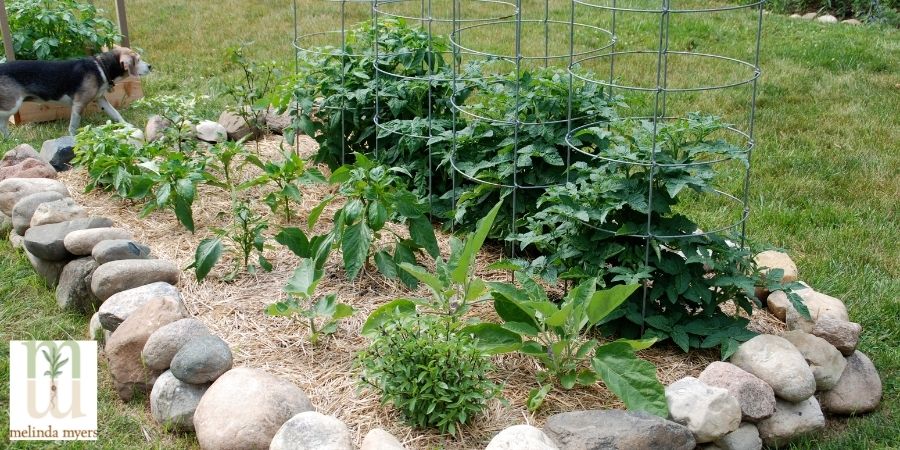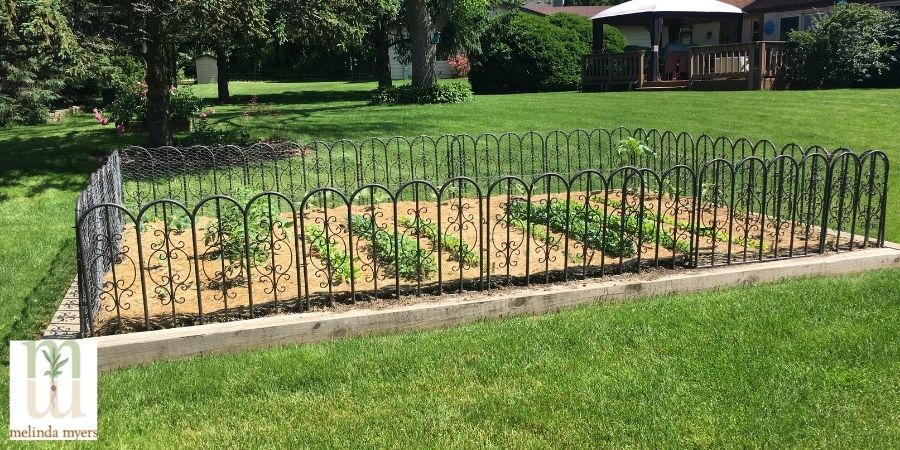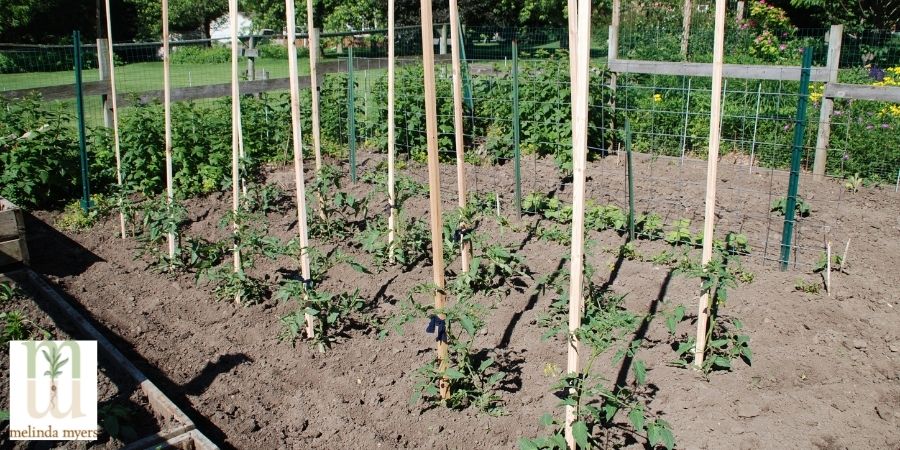Designing Your Vegetable Garden
- horticulturist and gardening expertMay 8, 2021
Designing your vegetable garden can be challenging. We often buy more plants and seeds than space and growing conditions allow or we just don’t know where to begin. Here are some tips and strategies to help you design a vegetable garden layout that works best for you and the vegetables you want to grow.
Selecting What Vegetables to Grow
So many choices and so little time and space. If you are like me you want to grow a wide range of vegetables including old favorites, those recommended by friends and family, and of course a few new introductions. But the more vegetables we grow, the more space and time needed to plant and to tend and manage the produce. Take a look at your list and use this list of criteria to create a more realistic and manageable garden.
Grow what you and your family like to eat fresh. Some vegetables like greens, broccoli, and peas taste best when harvested from the garden and served the same day.

Include vegetables that are used in many of your favorite recipes. Even a few garden fresh vegetables can boost the flavor of any dish.
Focus on those vegetables that help reduce your food budget. Grow those that are more expensive to purchase or provide a large harvest for the available space. Tomatoes, greens, and sweet peppers are a few favorites to consider. Sweet corn is fun and delicious to grow but requires more space than a single tomato plant that produces an average of 8 pounds or more per plant.
Grow vegetables suited to your growing conditions. Some vegetables require a longer growing season (frost-free days), warmer or cooler temperatures, or more sunlight than you may have available. You’ll maximize productivity and minimize frustration when you match the vegetables to your growing conditions and climate.
Create a garden that is a size you are able and willing to manage. Review your schedule and make sure you have sufficient time throughout the growing and harvest season to maintain, harvest, and utilize all the vegetables you grow.
Determine how much you plan to preserve through freezing, canning, and drying. If you are new to gardening or have a busy schedule it may be easier to grow what you like to use fresh and stock up at the farmer’s market when it’s time to preserve.
Plant a row or two to share with the food insecure in your community. Many are children and seniors that benefit from nutritional fresh produce. Even if you don’t plan for this most of us end up with extras to share.
Convert Your List to a Vegetable Garden Layout
Now you have a list of what you want to grow it’s time to start placing the vegetables into a garden design. Graph paper and a pencil, computer programs, or garden design apps are useful tools to help you do just that. Select the method that works best for you.
If you have youngsters you want to involve in the planning, break out old catalogs, crayons or colored pencils, paper, and glue. Have them create their own variations of the family vegetable garden. Or if space allows, let them design, grow, tend and harvest their own. Kids that help garden are more likely to eat their vegetables. The same applies to many adults.
Still, overwhelmed? Consider using one of the preplanned gardens you can find online. You may not find exactly what you are looking for, but you may find it easier to adapt an existing plan than starting from scratch.

Give Vegetables Room to Grow
Those seeds and small transplants will quickly grow to mature size. They need space to grow and flourish and you need space to reach each plant to tend and harvest. Overcrowding can increase the risk of disease and reduce the overall harvest. That extra plant does not guarantee a bigger harvest.
Check spacing requirements for each vegetable as you plan your garden. Seed packets, plant tags, gardening catalogs, and websites including your local University Extension’s can help. More compact varieties need less space than their larger counterparts. Consider growing these if space is limited or when gardening in containers and elevated planters.
Here is the average recommended spacing for some of the more popular vegetables:
- Beans 3 to 4”
- Beets 3-4”
- Broccoli 18-24”
- Cabbage 12-18”
- Carrots 2-3”
- Cauliflower 18-24”
- Chard 8-10”
- Eggplant 18-24”
- Kale 8-12”
- Leaf lettuce 4”
- Okra 15”
- Onion 2-4”
- Radish 1-4”
- Tomatoes 24-36”
Easy Garden Access
As you design your garden layout make sure you have easy access to all parts of the garden. Three to five feet wide garden beds surrounded by pathways allow easy access. Adding an internal path or steppers in larger beds is another way to create access to all areas. Making it easy to weed, water and harvest mean you are more likely to do this and maximize the benefits of growing your own vegetables.

Make Every Square Foot Count
Increase your harvest without expanding your garden with space-saving growing techniques. These techniques allow you to maximize every square inch of garden space.
Wide Rows – Eliminate the need for paths between each individual row of plants. Instead, plant vegetables with just enough space for each plant to reach its full size. You will need to dedicate less space to pathways and more room for growing vegetables.
Interplanting – Grow quick maturing vegetables like radish, lettuce, and beets between those like cabbage and tomatoes that take longer to reach full size. By the time the bigger vegetables need the space, you will have harvested those quick maturing veggies. You’ll grow more vegetables instead of weeds while waiting for your larger plants to fill in and cover that space.
Succession or relay planting – Once one vegetable is fully harvested, replant that space with another. Make sure the second or in some cases third planting will have time to mature before the end of your growing season. Fertilize as needed when switching out plantings. Consider using Milorganite a low nitrogen slow release fertilizer that won’t interfere with flowering and fruiting or burn plants when the weather is hot and dry.
Grow vertical – Train vining crops like cucumbers, squash, and melons onto support and tomatoes onto stakes or in cages. You’ll save valuable garden space, reduce the risk of disease and make harvesting that much easier. Create a sling from cloth or macramé and attach it to the support to prevent the weight of large squash and melons from breaking the vines.
Orient vegetable rows for maximum benefit – Monitor the conditions in your garden space to determine what is best for your situation. An east-west orientation has some advantages for frost protection, while a north-south orientation slightly increases the amount of sunlight reaching the plants. If sunlight is a concern, minimize shading by planting taller plants at the north end of the garden. Use shade cast by taller plants to extend the life of cool-season vegetables like lettuce and spinach.
Rotate crops – This is an ancient practice that is as important to home gardeners as farmers. Avoid planting the same vegetable and its relatives in the same location year after year. This reduces the risk of insects and diseases that attack that group of vegetables increasing over time. This is a challenge for small space gardeners. Every gardener should maintain healthy soil and provide proper care to grow healthy more pest-resistant plants. This is even more important when you are unable to adequately rotate plantings. Adding compost, mulching with organic materials, and fertilizing with Milorganite that contains 85% organic will help improve your soil.
Set your plan aside and review it in a day or two. Make needed changes, save a copy of your final plan, and then get started planting. Take pictures and make notes on what worked and changes you plan to make to this year’s vegetable garden layout. The pictures and notes make planning next season much easier. You’ll find your plans improve each season as you learn from both past successes and failures. This is just part of the joy and adventure of gardening!

